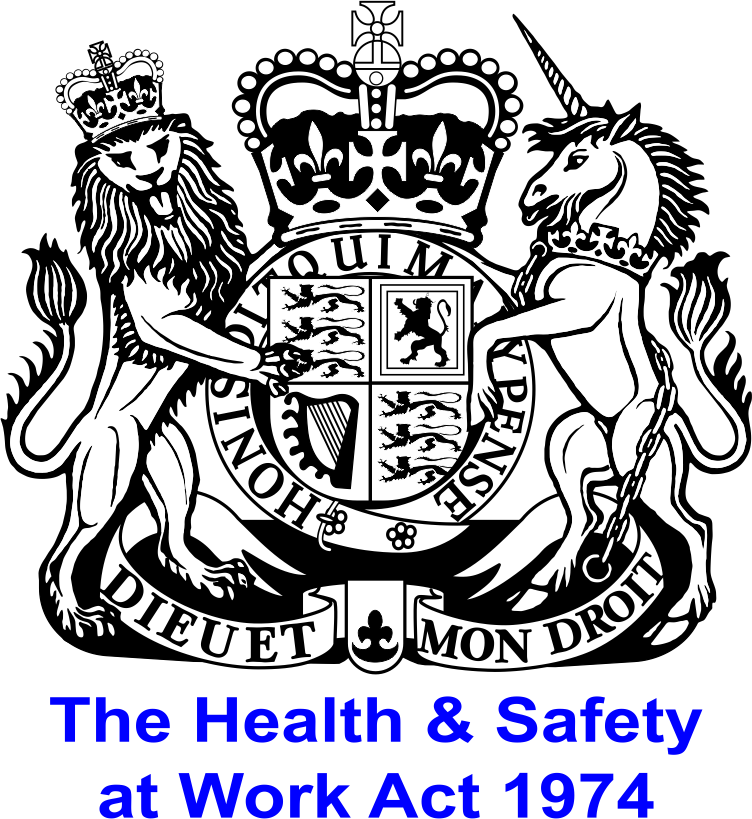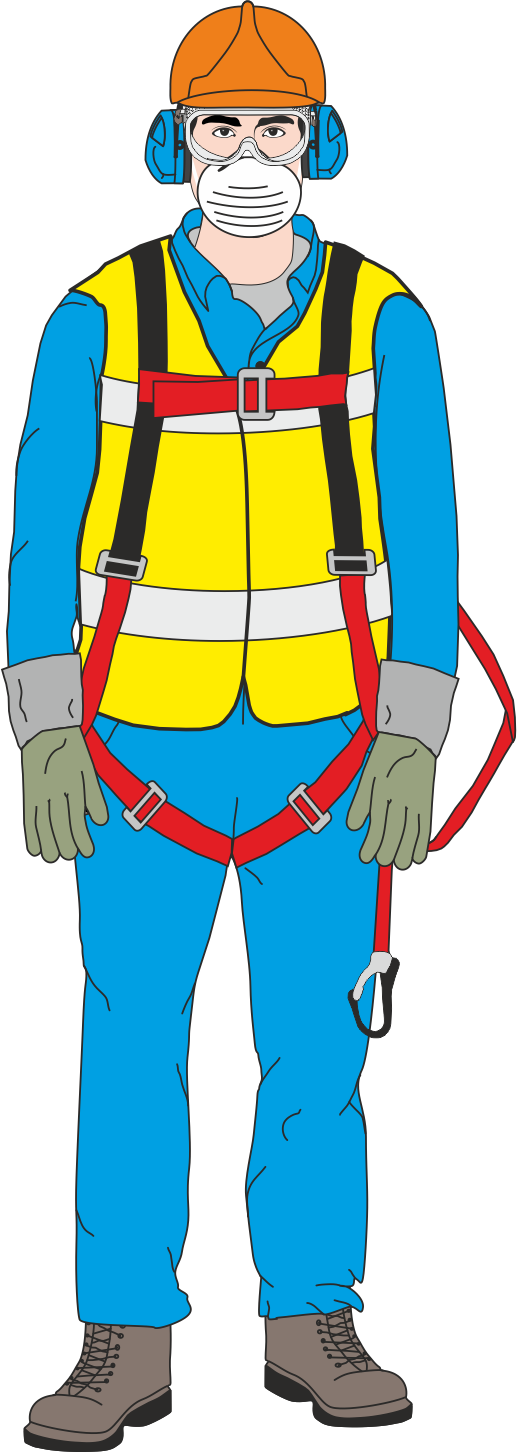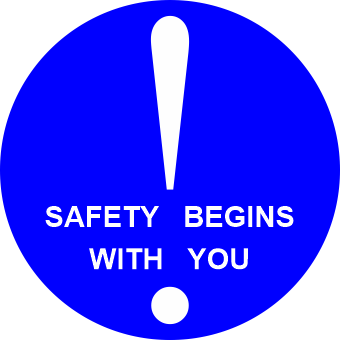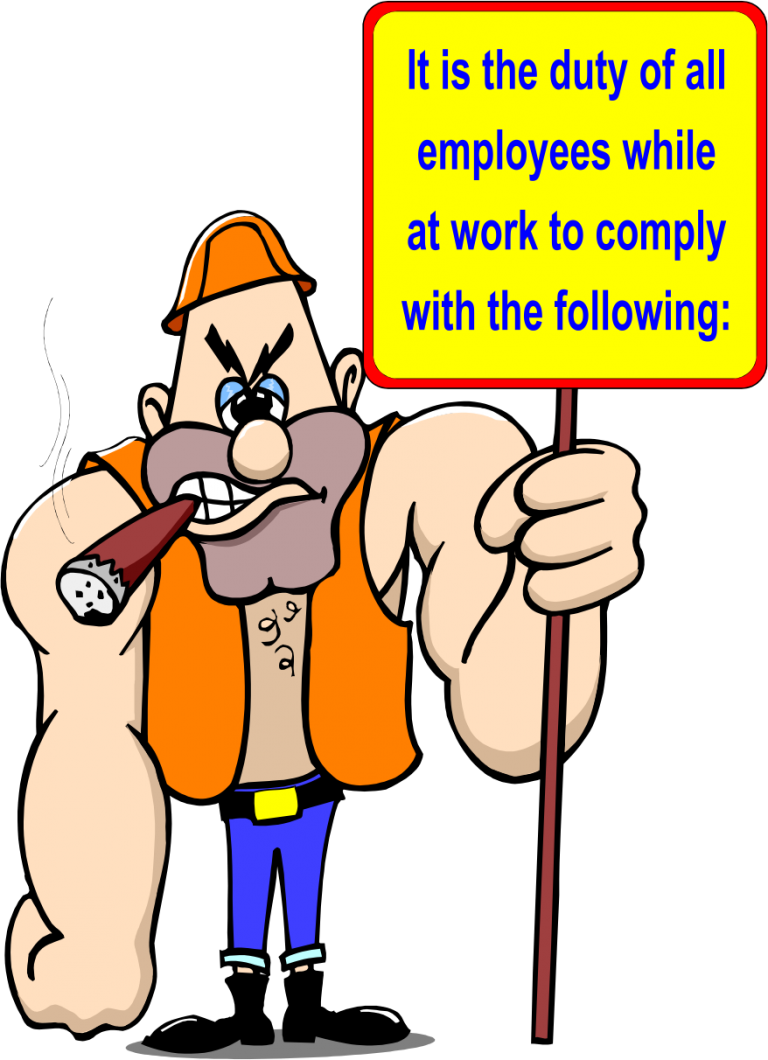
Teaching and learning resources for the construction industry with NVQ and Diploma Assessment Criteria
Previous to the Health & Safety at Work Act 1974 safety legislation had concentrated on specific types of workplace e.g. Factories Act 1961.
The Health and Safety at Work Act 1974 applies to people rather than premises and therefore covers all employees in all employment situations.
At a stroke, the Act removed all problems of interpretation as to whether or not certain premises were or were not a factory, a shop, an office, etc.

Part one
Section 7
The Health And Safety At Work Act (1974)
It shall be the duty of every employee while at work –
(a) To take reasonable care for the health and safety of himself and of other persons who may ` be affected by his acts or omissions at work; and
(b) As regards any duty or requirement imposed on his employer or any other person by or under any of the relevant statutory provisions, to co-operate with him so far as is necessary to enable that duty or requirement to be performed or complied with.
No person shall intentionally or recklessly interfere with or misuse anything provided in the interests of health, safety or welfare in pursuance of any of the related statutory provisions.
1. To secure the health, safety and welfare of all persons at work.
2. To protect the general public from risks to health and safety arising out of work activIties.
3. To control the use, handling, storage and transportation of explosives and highly flammable substances.
4. To control the release of noxious or offensive substances into the atmosphere.

These objectives can he achieved only by involving everyone in health and safety matters.
Employers and management.
Employees ( and those undergoing training ).
Self-employed.
Designers, Manufacturers and Suppliers of
equipment and materials.

Employers have a general duty to ensure the health and safety of their employees, visitors and the general public.
Provide and maintain a safe working environment.
Ensure safe access to and from the workplace.
Provide and maintain safe machinery, equipment and methods of work.
Ensure the safe handling, transport and storage of all machinery, equipment and materials.
Provide their employees with the necessary information, instruction, training and supervision to ensure safe working.
Prepare, issue to employees and update as required a written statement of the firm’s safety policy.
Involve trade union safety representatives (where appointed) with all matters concerning the development, promotion and maintenance of health and safety requirements.
An employer is Not Allowed to Charge an employee for anything done, or any equipment provided, to comply with any health and safety requirement.


An employee is an individual who offers his or her skill and experience etc.
to his or her employer in return for a monetary payment.

Take care at all times and ensure that their actions do not put at ‘risk’ themselves, their workmates or any other person.
Co-operate with their employers to enable them to fulfil the employers’ health and safety duties.
Never misuse or interfere with anything provided for health and safety.
Use the equipment and safeguards provided by the employers.

Judge
Small quantities of dangerous goods can be found in most workplaces.
Whatever they are used for, the storage and use of such goods can pose a serious hazard unless basic safety principles are followed.
These Regulations, often abbreviated to PUWER, place duties on people and companies who own, operate or have control over work equipment.
PUWER also places responsibilities on businesses and organisations whose employees use work equipment, whether owned by them or not.
What is a lifting operation?
Regulation 8(2) of LOLER defines a lifting operation as ‘an operation concerned with the lifting or lowering of a load’.
A ‘load’ is the item or items being lifted, which includes a person or people.
What is lifting equipment?
‘Lifting equipment’ means work equipment for lifting and lowering loads.
This includes lifting accessories and attachments used for anchoring, fixing or supporting the equipment (examples of lifting equipment)
The aim of the Noise Regulations is to ensure that workers’ hearing is protected from excessive noise at their place of work, which could cause them to lose their hearing and/or to suffer from tinnitus (permanent ringing in the ears).
The purpose of The Work at Height Regulations 2005 is to prevent death and injury caused by a fall from height.
If you are an employer or you control work at height (for example facilities managers or building owners who may contract others to work at height) the Regulations apply to you
RIDDOR is the law that requires employers, and other people in charge of work premises, to report and keep records of:
Work-related accidents which cause deaths
Work-related accidents which cause certain serious injuries (reportable injuries)
Diagnosed cases of certain industrial diseases; and certain ‘dangerous occurrences’ (incidents with the potential to cause harm)
The Management of Health and Safety at Work Regulations 1999 (the Management Regulations) generally make more explicit what employers are required to do to manage health and safety under the Health and Safety at Work Act.
Like the Act, they apply to every work activity.
Whatever your role in construction, cdm aims to improve health and safety in the industry by helping you to:
Sensibly plan the work so the risks involved are managed from start to finish
Have the right people for the right job at the right time
Cooperate and coordinate your work with others
Have the right information about the risks and how they are being managed
Communicate this information effectively to those who need to know
Consult and engage with workers about the risks and how they are being managed
Additional learning resources for this unit can be found on the following links
Task A1: Health & Safety In Construction.
Task A2: The role of the Health & Safety Executive.
Task A3: Health & Safety Regulations.
Task A4: Responsibility for Health & Safety.
Task A6: Health & Safety Risks In Construction.
Task A8: Safety Sign Categories.
Task A10: Global Harmonized System Level 1.